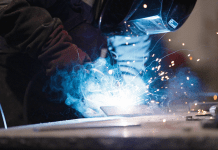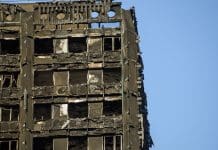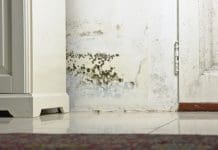Recognising that cavity walls are a source of heat loss, Nick Ralph from the Mineral Wool Insulation Manufacturers Association (MIMA) looks at the background to the changes and the solutions available to meet the requirements of Part L.
Historically, there was an assumption that cavity party walls were an area of thermal equilibrium between two heated spaces and not a source of heat loss. However, studies by the Buildings and Sustainability Group of the School of the Built Environment at Leeds Metropolitan University between 2005 and 2007 showed that, for example, in a mid-terrace dwelling the heat lost through the untreated party cavity walls could be greater than that which is lost through all of the other external elements combined.
The study demonstrated that heat energy from both dwellings can escape into the party wall cavity. This causes free moving air in the cavity to warm and rise up through the cavity, bypassing the loft insulation and – in a majority of cases – continuing to the roof line where the air and heat energy escape to the external environment. As the warmed air in the cavity rises, cool air from adjoining external cavity constructions is drawn into the party wall cavity, forming a chimney stack effect and a significant source of continuous heat loss. In addition, windy conditions can induce differential pressure that leads not only to heat losses at the junction of the party cavity with both external walls and suspended floors, but also increased heat loss due to the stack effect of the cavity.
A series of field trials conducted on the party wall cavities of terraced and semi-detached masonry houses revealed that the magnitude of the party cavity wall thermal bypass was equivalent to the party wall having an effective U-Value of the order 0.5 to 0.7 W/m2K. If not addressed, this has a considerable effect on a dwelling SAP score and needs to be countered through additional enhanced performance in other areas, in order to bring the dwellings SAP score up.
As a result, there was an inclusion in the amended Domestic Building Regulations in 2010 (Part L1A) that party walls would need to be fully filled with suitable insulation and effectively sealed at the edges in order to achieve an effective zero-value. Full-fill mineral wool insulation is particularly suited, as together with effective edge sealing, it has been proven to comply with the requirements for a zero U-value without compromising acoustic performance. Indeed, since the inclusion, a number of solutions have been approved as Robust Details, and can therefore be used to comply with the requirements of Part E1 in England and Wales without pre-completion testing.
Mineral wool is easy to install and is also non-combustible, providing in-built fire protection and effectively contributing to the fire safety of buildings. Mineral wool insulation is one of the few building materials that saves energy in use and reduces the need for combustion of fossil fuels to provide energy for heating or cooling of buildings. The recycled content and recyclability of the material also reduces waste disposal needs and saves valuable resources both now and in the future. This is reflected in the Green Guide A+ rating of mineral wool party wall insulation products.
The case for retro-fitting party cavity walls
Through its work with Leeds Metropolitan University and the BRE, MIMA has also more recently proven the case for retrofitting existing party cavity walls using blown fibre mineral wool, prompting DECC’s plans to include the measure in the latest RdSAP changes for Green Deal and in turn making it eligible for ECO.
Leeds Metropolitan University undertook a series of field tests over four heating seasons between 2008 and 2013, to analyse the effects of filling existing party cavity walls with mineral wool insulation, using conventional cavity blowing techniques. Taking a mid-terrace house, which was built between 1990 and 2001, the study demonstrated an annual saving of 1,978 kWh of energy and 0.38 tonnes of CO2 – equating to a £70 reduction in household energy costs. The performance improvement was modelled on RdSAP at an improved effective U-value from 0.20w/m2k to 0.05w/m2K.
It was these results that lead to the measure being included in RdSAP, which is expected to come into force in August 2014.
About the organization
Representing manufacturers of stone and glass mineral wool insulation, MIMA aims to provide an authoritative source of independent information on the products’ properties and applications; and is recognised for its contribution to a wide range of consultation exercises relating to energy saving strategies and the improvement of the built environment.
MIMA has been instrumental in bringing about changes to Part L of the Building Regulations and RdSAP for Green Deal to address the issue of significant energy leakage.
The trade body has close relationships with central government, local authorities and research institutes. It is actively involved in the development of relevant directives and regulations; and in particular has championed the use of Building Regulations to drive change in building practices to improve delivered thermal performance and measure real, in-situ performance. ■
For further information on MIMA and technical guidance on insulating party walls visit www.mima.info
. . . . . . . . . . . . . . . . . . . . . . . . . . . . . . . . . . . . . . . . . . . . . . .
Nick Ralph
Mineral Wool Insulation Manufacturers Association (MIMA)
Tel: 020 7935 8532













